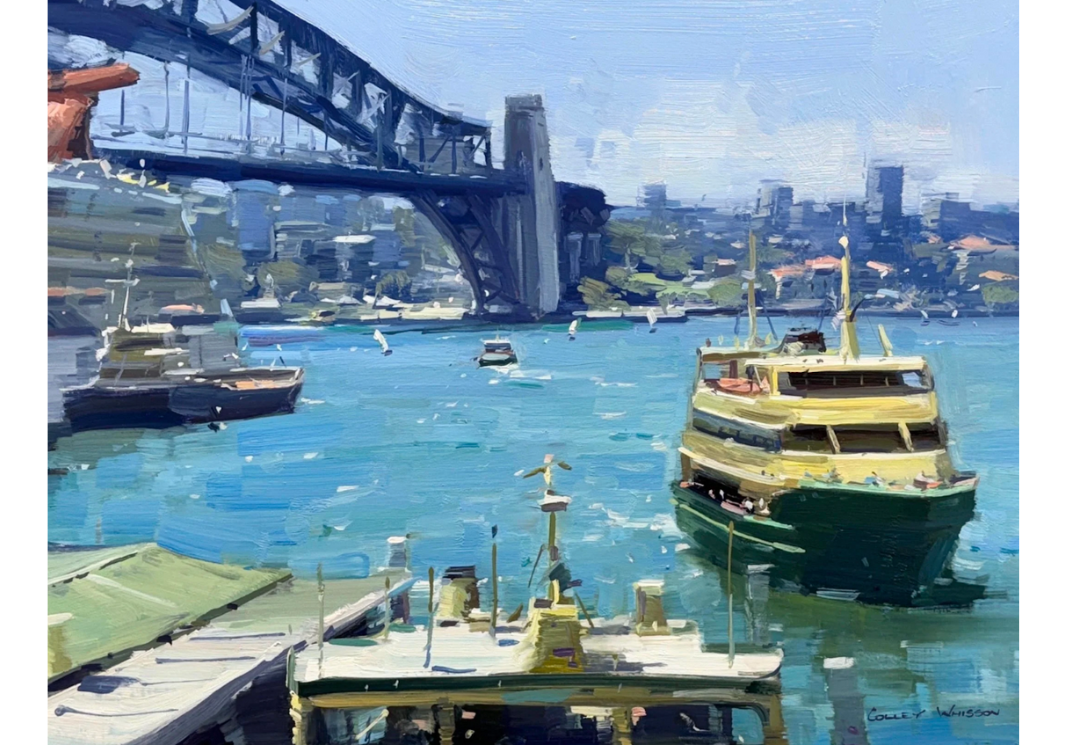Shadows and Shapes: Unlocking Depth in Your Paintings
from Colley Whisson
When we think about painting, the first instinct is often to focus on light. After all, it’s light that reveals form, color, and atmosphere. But as Colley has discovered over years of painting and teaching, it’s often the shadows that hold the real key to depth, drama, and storytelling in a scene. By learning how to see, shape, and refine shadows, you can bring an entirely new dimension to your work.
Seeing Shapes, Not Just Scenes
Whether you’re out on holiday with a smartphone in hand or preparing to sketch on location, begin by looking at the shapes in front of you. Every scene can be broken down into three primary regions: foreground, mid-distance, and distance. These layers, defined by light and shadow, allow us to create depth that pulls the viewer in.
Take, for example, the Bay of Islands in New Zealand. The vanishing point in the distance naturally gives a sense of depth, while the large middle shape and subtle shadows in the foreground anchor the scene. Even within a small area, lighter tones, midtones, and darker tones create multiple levels of depth—an essential step in drawing the eye through your painting.
The Power of Shadows
When studying a landscape, pay close attention to the architecture of shadows. They aren’t just voids of darkness—they are forms with structure, color, and movement. In Akaroa, for instance, the cliff faces are marked with rich shadows. But a shadow that is too dark can overwhelm the painting. Instead, experiment with shifting the color—introducing purple, or softening values—so the shadow enhances rather than dominates the scene.
Shadows also provide an opportunity to edit. You don’t have to include every shadow you see. Select the ones that serve your composition and tell your story. Cropping or exaggerating a shadow can create a rhythm that carries the viewer through the picture plane.
Rethinking Light Through Shadow
Colley once thought of himself as a painter of light. But the more he studied, the more he realized: without shadows, light has no power. A tree casting a long arc across a sunlit lawn isn’t just background detail—it’s a design element. The curve of that shadow, the way it stretches, the subtle influence of sky color within it—all of these contribute to the harmony of a painting.
As shadows extend, they pick up reflected light and surrounding colors. A shadow isn’t just “dark green” or “dark gray.” It may be softened by blue from the sky, warmed by surrounding foliage, or cooled by nearby water. Training your eye to see these shifts is what transforms a flat painting into one that feels alive.
Interlocking Shapes for Depth
In Sydney, Colley once painted a harbor scene with ferries and the iconic bridge in the distance. The key wasn’t in painting the ships themselves—it was in studying how the shadow shapes interlocked across foreground, mid-distance, and background. By overlapping darker shapes in front of lighter ones, he created a seamless path for the eye, a “faultless line” that connected the entire composition.
This principle applies everywhere: use shadows to knit your painting together. Let them overlap, interlock, and echo across your composition. Done well, they become the invisible thread holding everything in harmony.
The Essential Role of Drawing
Ultimately, mastering shadows begins with drawing. Training your eye to see shapes—not objects—helps you simplify complex scenes. Draw the architecture of shadows. Notice how one merges into another, how they shift in value, and how they carry depth across the canvas. The more you practice, the more natural it becomes to build shadows into your compositions with intention.
Final Thoughts
The next time you set up to paint, don’t just look for the light. Look for the shadows. Ask yourself:
How do these shapes define depth?
How can I adjust or exaggerate them to strengthen the composition?
What subtle colors exist within them?
By studying and practicing the art of shadows, you’ll not only add depth to your paintings—you’ll also add clarity, movement, and strength. Shadows are more than the absence of light. They are the silent architects of depth and atmosphere, and they might just be the missing key to pushing your work to the next level.



